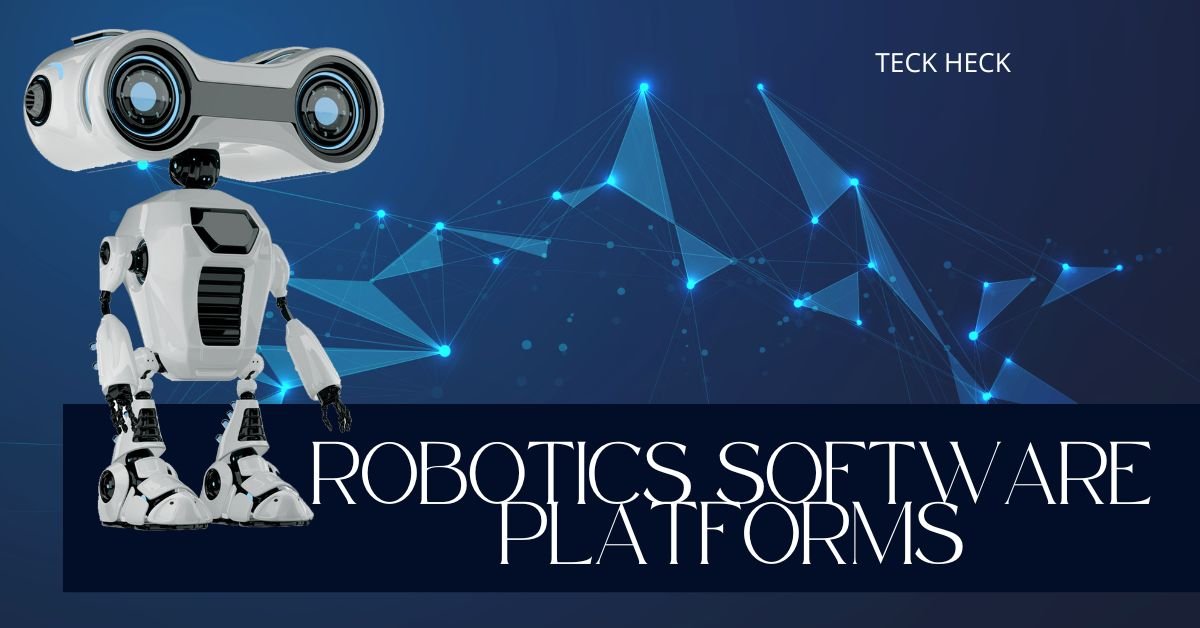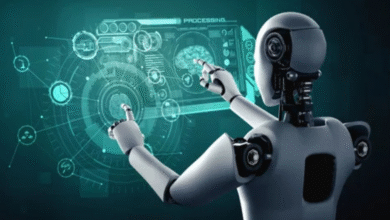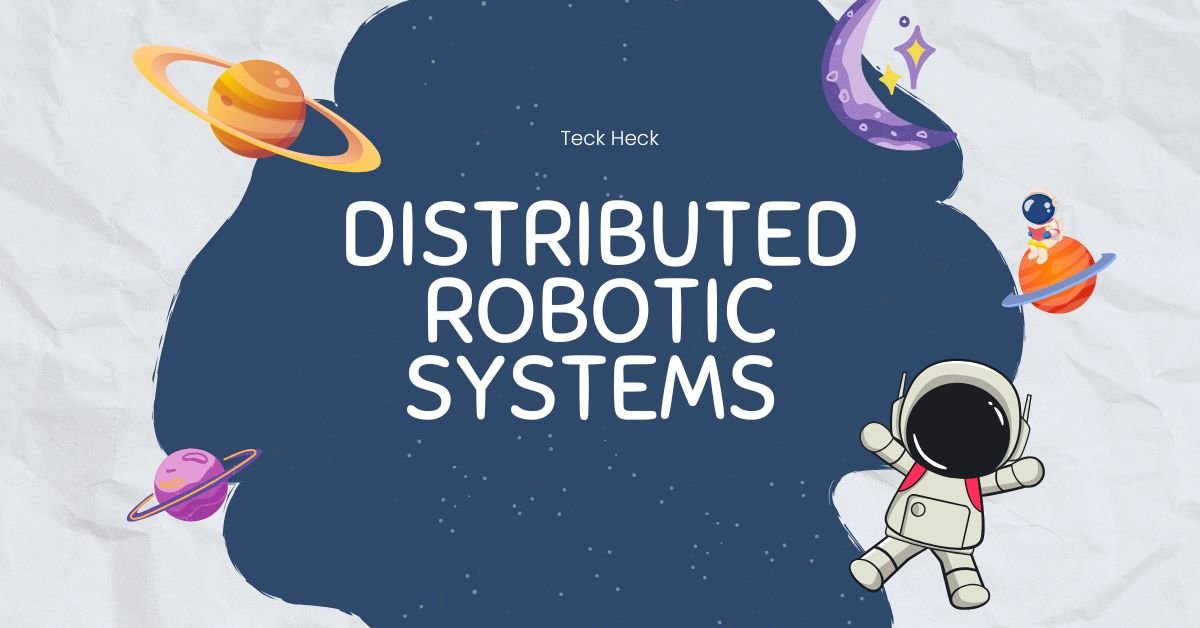
Robotics system development is largely dependent on advanced software platforms that offer the environments, libraries, and tools needed to design, simulate, program, and control robots. Developers and engineers can design applications ranging from basic task automation to intricate autonomous systems using these robotics software platforms. The main characteristics of some of the most popular robotics software platforms, as well as how they develop the field, will be discussed in this article.
Robotics Software Platforms: What Are They?
Integrated software systems that offer every component required for programming, simulating, controlling, and interfacing with robots are known as robotics software platforms. Frameworks and libraries for robot perception, motion control, planning, communication, and sensor and actuator integration are provided by these platforms.
They allow users to concentrate on higher-level activities like task planning, decision-making and behavior design by abstracting away the difficulties of low-level programming.
One of the main characteristics of robotics software platforms is their modularity, which enables users to plug in various modules or components that are tailored to the requirements of their particular robot. This makes it simple to adapt the platform to a broad range of robots, including autonomous cars and industrial robots.

Simulation: The capacity to model robots and their environs is a fundamental component of robotics software platforms. Without requiring a real robot, simulation enables engineers to test algorithms, robot interactions, and behaviors, which lowers costs and boosts productivity.
Real-time Control: Real-time control systems are frequently included in robotics software platforms, allowing the robot to react to changing circumstances and interact with the physical environment. This entails controlling the robot’s actuators, sensors, and intersystem communication.
Hardware Interfacing: A number of robotics software platforms include capabilities for integrating with different kinds of hardware, including motors, actuators, sensors, and cameras. These systems offer middleware and drivers to control communication between the robot’s hardware components and software.
Support for several Robots: Certain platforms allow for the coordination and cooperation of several robotic systems. Applications such as fleets of autonomous vehicles or warehouse automation benefit greatly from this.
Cross-Platform Compatibility: A lot of robotics platforms are compatible with many operating systems, such as Windows, Linux, and macOS. This enables programmers to create programs that are not constrained by particular operating system or hardware requirements.
Well-known Platforms for Robotics Software
Operating System for Robots (ROS)
Overview: The open-source ROS framework is used to create new robot applications. It offers a vast collection of tools and libraries to assist developers in building intricate robotic systems. Many people consider ROS to be the most well-liked and complete robotics platform since it offers a common interface for motion planning, communication, sensor integration, and other features.
Important attributes:

Distributed computing: ROS’s architecture enables modular, decentralized communication between the robot’s many components because it is built for distributed systems.
Broad support for libraries: ROS comes with a large number of pre-built libraries and packages for tasks including manipulation, perception, and navigation.
Tools for simulation: ROS is compatible with well-known simulators such as Gazebo, which let users model robots in intricate settings.
Applications: From autonomous cars and drones to industrial robots and personal assistant robots, ROS is utilized in research, education, and commercial applications in a variety of industries.
Robotics by VEX
Overview: VEX Robotics is a well-liked educational platform, especially for instructing kids in programming and robotics. For building and programming robots the VEX Robotics Software Platforms offers both software and hardware options.
Important attributes:
Visual Programming Interface: VEX makes programming simple, especially for novices, with its drag-and-drop interface (VEXcode).
Programming language compatibility: For more experienced users, VEX Robotics also supports languages like Python and C++.
Applications: VEX Robotics is extensively utilized in educational institutions and schools, as well as in contests such as the VEX Robotics Competition, where students construct and program robots to carry out particular tasks.
CoppeliaSim (V-REP)
Overview: Previously known as V-REP, CopelliaSim is a flexible robot simulation platform that lets programmers create 3D models and simulations of robots and their environs. It supports a large variety of robots and is made to be very customizable.
Overview of Microsoft Robotics Developer Studio: Microsoft Robotics Developer Studio is a collection of technologies and tools designed to help developers create, model and implement robotic applications. It offers a complete setting for creating robotic systems, both virtual and real.
Qualities:
Simulation: The platform’s robust simulation facilities facilitate the development and testing of robots in a simulated setting prior to deployment.
Visual Programming: Developers may visually build robotic actions using the drag-and-drop interface, which eliminates the need for intricate coding.
Windows integration: Microsoft Robotics Developer Studio offers developers a recognizable coding environment through seamless Windows integration.
Applications: Despite being phased out in 2013, it was crucial in the development of robotics applications for both educational and Windows-based robots.
Webots
Overview: Webots is a development platform for creating 3D simulations of mobile robots. It is often used in academic and research settings due to its versatility and ease of use.
Features:
Simulation: Webots offers a robust simulator where robots can be tested in dynamic environments. It supports both of indoor and outdoor simulations.
Cross-platform: It is compatible with Linux, Windows, and macOS, and offers integration with ROS for enhanced flexibility.

Extensive Robot Library: Webots provides an extensive library of robot models, sensors and actuators, making it easier to start building simulations.
Applications: Webots is often used in robotics research, education, and competitions such as RoboCup, where participants design autonomous robots to compete in various tasks.
In conclusion
The creation of contemporary robotic systems depends on robotics software platforms. These platforms, which range from research-focused tools like ROS and Webots to instructional platforms like VEX Robotics, enable developers to build complex robots for a variety of uses. The development of these platforms will spur innovation as robotics and AI continue to advance, allowing for smarter, more competent robots that have the potential to revolutionize industries, increase safety and improve people’s quality of life everywhere.



